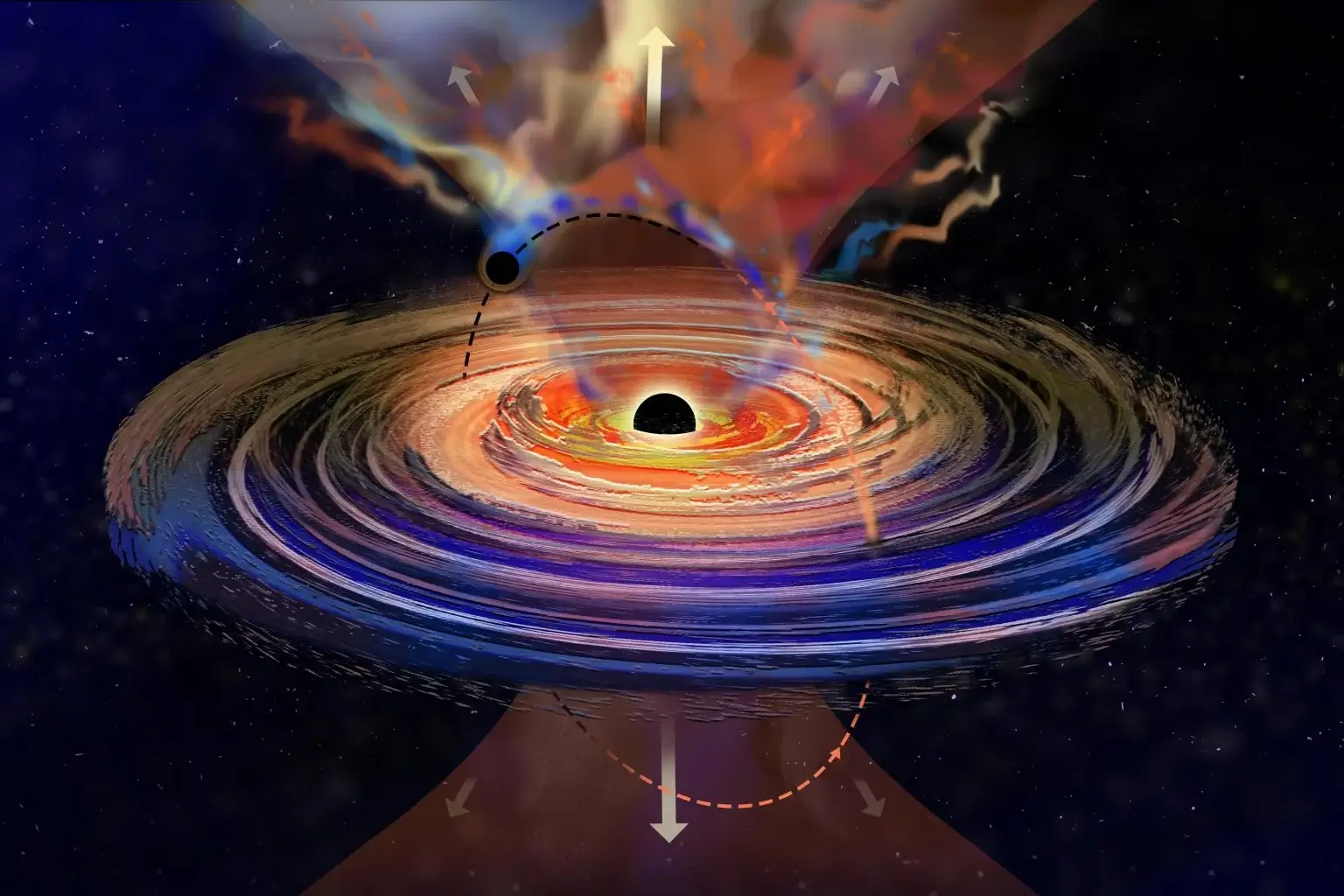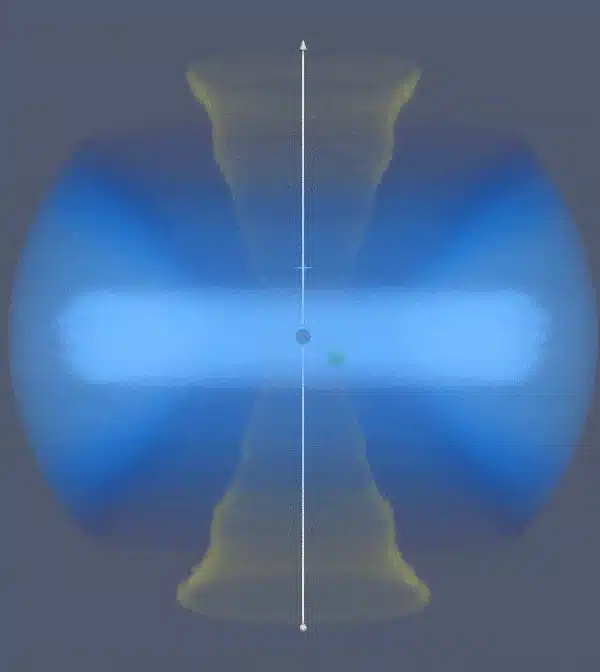In a distant galaxy, the supermassive black hole's intermittent gas fluxes led to the discovery of a smaller black hole in its orbit

At the core of a distant galaxy, a supermassive black hole appears to be experiencing a bout of hiccups.
Astronomers have discovered that a black star, located at the center of a galaxy 800 million light-years away and previously quiescent, suddenly erupted and emitted bursts of gas every 8.5 days before returning to its usual quiescent state.
The cyclic hiccups are a new behavior not seen in black guys before. The scientists believe that the most likely explanation for the outbursts comes from a second, smaller black hole that moves as fast as the central supermassive black hole and ejects material from the gas disk of the larger black hole every 8.5 days.
The team's findings challenge the conventional view of black hole accretion disks, which scientists assumed were relatively uniform disks of gas orbiting a central black hole. The new results suggest that the accretion disks may be more diverse in their contents, possibly containing other black holes and even entire stars.
"We thought we knew a lot about black holes, but this shows us there's a lot more they can do," says study author Dirge Pasham of MIT. "We think there will be many more such systems, and we just need to collect more data to find them."

In December 2020, the ASAS-SN robotic telescope survey discovered a burst of light in the distant galaxy about 800 million light years away. This particular part of the sky was relatively quiet and dark beyond the telescope's detection, when the galaxy suddenly became a thousand times brighter. Pasham, who happened to see a report on the discovery in an alert to astronomers, chose to focus on the flare using the NICER X-ray telescope on the International Space Station. The timing was good because Pascham was nearing the end of the year when he had permission to direct the telescope.
He trained NICER to observe the distant galaxy that continued to flare. The outbreak lasted about four months and then gradually stopped. During this time NICER measured the X-ray emission from the galaxy at a high daily rate. When Pasham scrutinized the data, he noticed an intriguing pattern in the four months of the flare: slight dips in a very narrow frequency range of X-rays that reappeared every 8.5 days.
The galaxy's burst of energy appears to cycle every 8.5 days. The signal is similar to what astronomers see when an orbiting planet crosses in front of its host star, briefly obscuring the star's light. But no star can hide a flare from an entire galaxy.
More of the topic in Hayadan:
- Black hole eating disorders
- ESO's Giant Telescope in Chile watched the star dance around the supermassive black hole at the center of the Milky Way; Proves that Einstein was right
- Stellar surprise: a fountain of youth at the center of our galaxy "should be impossible".
- Astronomers find evidence of colliding black holes that emitted light

One response
Could it be that a black guy also needs to preserve some kind of ratio between density and mass/energy, and when such a ratio is violated, there is an emission..?.